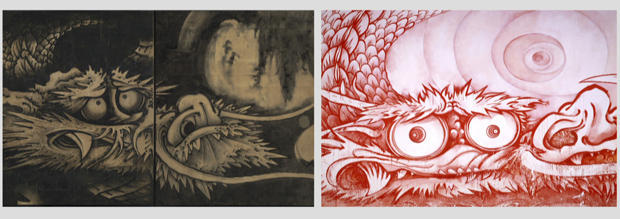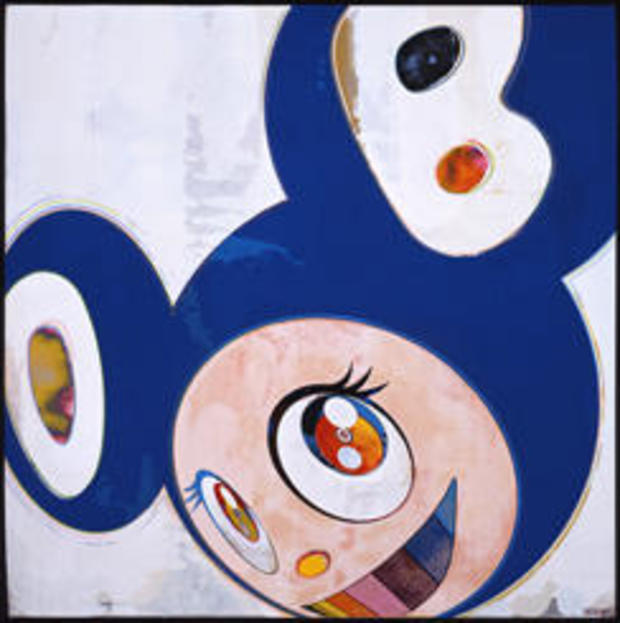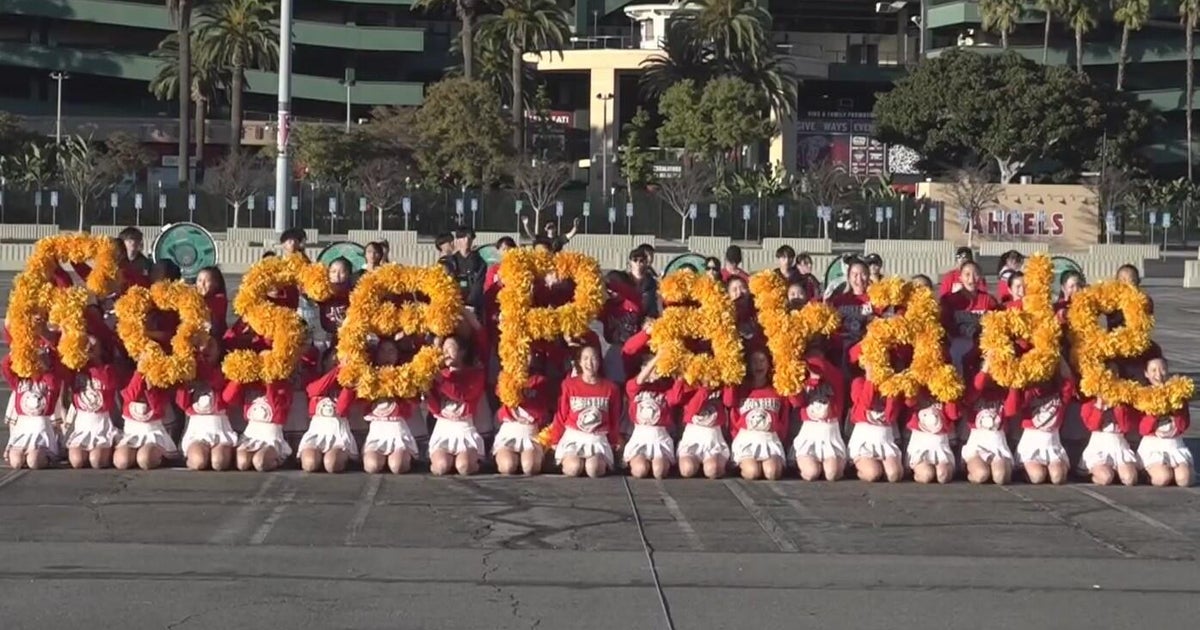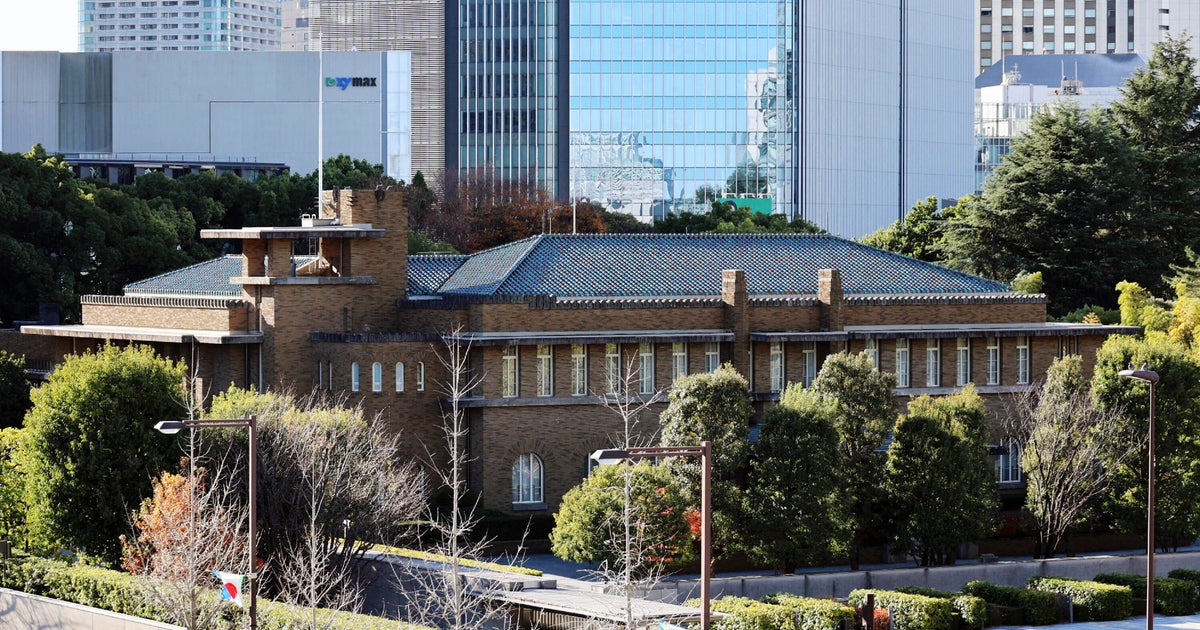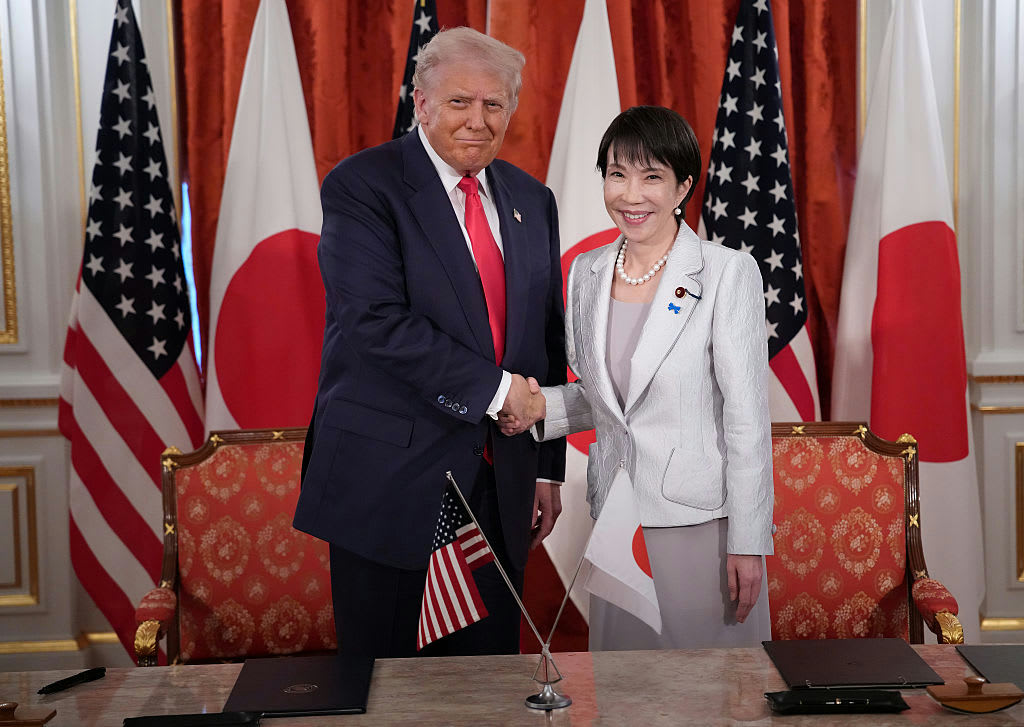Takashi Murakami, Japan's Andy Warhol
Now On Display in Boston, the works of one of Japan's most prolific contemporary artists. With Serena Altschul now we'll view the art ... and meet the artist:
Most artists struggle to break into mainstream culture. Takashi Murakami is not one of them. His Instagram is filled with familiar celebrities, and his work has been featured everywhere from a Kanye West album, to Macy's Thanksgiving Day Parade, and Louis Vuitton bags.
Altschul asked, "Why do you think your work is so popular here?"
"I don't know," he replied. "This is my big question, too. So just, you know, good timing."
To say Murakami is a character is an understatement. And his work is just as unique as he is -- works like those now on display at the Museum of Fine Arts, Boston.
One painting, titled "Lots, Lots of Kaikai and Kiki," is a prime example of Superflat, a modern art movement pioneered by Murakami. Superflat merges pop art and anime with fine art techniques, putting them together on one surface.
Each work may be comprised of several large panels. "It's very reminiscent of a Japanese screen," said curator Anne Morse.
The Boston exhibit shows yet another layer of Murakami's art, by pairing the works of this modern Japanese artist with traditional Japanese art.
"From the very beginning, he's been so aware of these masters from the past," said Morse. "It's not just a simple appropriation. And talking to him, you get a great sense of his study of these."
Take a look at these two dragons, created more than two centuries apart.
Murakami's work is largely inspired by his upbringing in Japan, after the Second World War. Born in 1962, he began painting as a teenager at a time when cute, childlike images were gaining popularity.
Murakami's art is a spinoff of those images -- a commentary on what he considers a vacuous post-war consumer culture, and lingering trauma from the atomic bombs.
Morse said, "He's very conscious the fact that Japan lost the war, that there's still some inability to reckon with that past. So, there is that tension in his art between these cute art figures, but also the thinking behind it."
Murakami's main studio is in Saitama, Japan. There, he works around the clock alongside more than 100 assistants on everything from silk screening to merchandise.
His focus on consumerism -- both in his art and successful branding -- has conjured up memories of another artist.
He has been referred to as "the Japanese Andy Warhol."
Altschul asked, "You often hear your name compared to Andy Warhol, modern-day Andy Warhol. How do you feel about that? It's okay?"
"Yeah, yeah," he replied. "I was very happy, because, you know, 'Oh, my God. He's a big guy, right?'"
But even without the comparisons, Anne Morse said Takashi Murakami has a place in history.
Morse said, "When time passes, I think we'll actually see him as being a very significant player in this time, and representative of this time."
For more info:
- "Takashi Murakami: Lineage of Eccentrics" at the Museum of Fine Arts, Boston (though April 1)
- "Murakami & Abloh: Future History" at Gagosian Gallery, London (through April 7)
- "Takashi Murakami: The Octopus Eats Its Own Leg" at Vancouver Art Gallery (through May 6), and at the Modern Art Museum of Fort Worth (June 10-Sept. 16)
- "Takashi Murakami: Solo Show" at 130 Orchard Street, New York (April 28-June 17)
Story produced by Sara Kugel.


